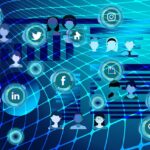IoT’s Rising Importance
The “Internet of Things” (IoT) has rapidly evolved from being just a buzzword to becoming one of the most influential drivers of technological innovation in the 21st century. In essence, IoT is about connecting everyday objects—ranging from home appliances to industrial equipment—to the internet. This interconnectivity, when applied effectively, promises improved efficiency, automation, and new ways of interaction. One of the most promising applications of IoT is in the urban context, laying the foundation for the so-called “Smart Cities.”
Smart Traffic Management Systems
One of the perennial problems of urban centers around the world is traffic congestion. It not only leads to countless hours of lost productivity but also contributes to increased pollution levels. IoT has emerged as a game-changer in this regard. By installing sensors on roads, traffic signals, and vehicles, cities can monitor real-time traffic flow. Smart algorithms can then analyze this data to predict traffic congestions, suggest alternative routes to drivers, and dynamically change traffic signal timings to optimize traffic flow. This not only reduces congestion but also lowers vehicle emissions, promoting greener urban environments.
Enhanced Public Safety
Safety is a paramount concern for any urban center. Through IoT, cities can bolster their public safety mechanisms. Surveillance cameras equipped with smart recognition software can detect suspicious activities, potentially preventing crimes. Additionally, by connecting emergency services like fire, police, and medical response units into an integrated IoT system, cities can ensure quicker response times during emergencies. For example, in the case of a fire outbreak, sensors can detect smoke or heat and automatically notify the nearest fire station, even before any human realizes the danger.
Sustainable Resource Management
Sustainability is a crucial concern for modern cities, given the increasing challenges posed by climate change. IoT offers smart solutions here as well. For instance, smart meters can provide real-time data on electricity, water, or gas consumption. This helps in identifying wastage, understanding peak demand times, and tailoring supply accordingly. Similarly, sensors in public places can monitor air quality, providing city officials with data that can be used to implement measures to combat pollution.
The Future: IoT-Powered Autonomous Services
While the current applications of IoT in smart cities are impressive, the future holds even more promise. Imagine a city where trash bins alert the collection trucks when they are full, street lights adjust their brightness based on the presence or absence of pedestrians and vehicles, or parking spots that notify drivers about their availability in real-time. As autonomous vehicles become more prevalent, an IoT-powered infrastructure will play a critical role in ensuring seamless and safe operations. These cars can communicate with traffic signals, other vehicles, and even pedestrians, ensuring optimal traffic flow and safety.

Challenges Ahead
While the benefits of integrating IoT into urban infrastructure are undeniable, it also brings forth a set of challenges. Data privacy is a primary concern. As more devices collect more data about the daily lives and routines of citizens, there is an increased risk of this data being misused. Ensuring robust data protection mechanisms is crucial. Additionally, the sheer volume of data generated by IoT devices requires advanced data management and processing solutions. There’s also the challenge of ensuring interoperability between different devices and systems. Lastly, like any other technology, IoT systems are susceptible to cyberattacks, so robust cybersecurity measures are essential.
Personalized Urban Experiences
As cities become smarter, there’s a distinct move towards tailoring urban experiences to individual needs, powered by the Internet of Things. The ubiquity of wearable tech, like smartwatches and fitness trackers, along with smartphone apps, can interface seamlessly with a city’s infrastructure to offer a more personalized experience. Consider a scenario where a citizen with mobility challenges is navigating the city. Their wearable device can communicate with public transportation systems in real-time, ensuring that they’re alerted to the nearest accessible transport options or given a heads-up when an elevator or ramp is out of service. Similarly, for those with health issues, sensors around the city can provide real-time data about environmental allergens or air quality, allowing individuals to adjust their plans or routes accordingly. Moreover, the integration of augmented reality (AR) with IoT can further enrich the urban experience. Tourists could potentially point their smartphones at a historic monument and get instant information and virtual guided tours. For the daily commuter, real-time updates about the best coffee shops or eateries en route, based on their past preferences, can be projected.
Economic Impacts and Opportunities
The infusion of IoT in urban settings isn’t just about improving quality of life; it’s also a significant economic driver. The data generated by connected devices is invaluable for businesses. Retailers can fine-tune their offerings based on the real-time movement and preferences of potential customers. For instance, a cafe in a busy area can adjust its menu offerings in real-time based on the preferences of people currently around that location, as indicated by their past purchases and online searches. Moreover, the need for building, managing, and refining the smart city infrastructure brings about job opportunities in tech, data science, urban planning, and cybersecurity sectors. Start-ups have an incredible opportunity to innovate and cater to niche areas within the smart city ecosystem. For instance, developing algorithms that can predict infrastructure failures before they happen or apps that can help reduce energy consumption in real-time. However, it’s essential to ensure that the economic benefits are equitably distributed. As cities adopt more tech, there’s a risk of widening the digital divide. Efforts must be made to ensure that all citizens have access to the benefits brought about by IoT, regardless of their socio-economic status.
Conclusion
The ongoing transformation powered by the Internet of Things in urban environments is profound. Beyond the evident enhancements in efficiency and sustainability, the deep-seated potential lies in redefining the relationship between cities and their inhabitants. As technology continues to evolve, and as we learn more about harnessing the vast amounts of data generated, the vision of truly interconnected and responsive cities seems more attainable than ever.







